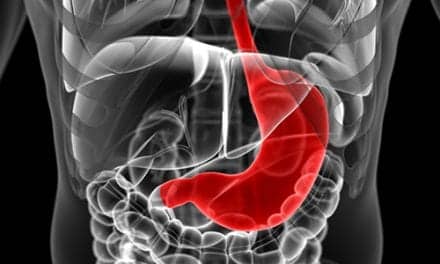Self-management of asthma requires a change in behavior and a commitment to a healthy lifestyle. It is part of a team approach that includes the patient, physician, therapist, and family.
Brian Tiep, MD, may not look it, but, in his own quiet way, he is a medical revolutionary. The founder and medical director of the Respiratory Disease Management Institute (RDMI), Tiep has spent his career as a pulmonologist changing the focus of caring for the chronically ill from treating symptoms to managing the disease—with the clear knowledge that these patients’ disease, COPD (chronic obstructive pulmonary disease, a rubric that includes emphysema, chronic bronchitis, asthma, and pulmonary fibrosis), will not be cured, but can be controlled.
Tiep, whose dedicated team includes a nurse, Mary Barnett, respiratory therapist Richard Murray, and a psychologist, Richard Knowles, says that not only does his approach improve the quality of life of his patients, but also saves money by reducing their number of hospitalizations. COPD is the fourth leading cause of death in the United States and is the only major illness on the rise: It has grown by 163%, affecting approximately 15 million Americans. COPD exacerbations are a frequent cause of hospitalization, but Tiep’s initial data are promising, showing that only about 5.6% of the exacerbations in his patients ever need hospitalization.
Tiep’s management plan is simple and cost-effective. Patients are trained to get up; dress; use their medication, inhalers, and oxygen; cough and clear secretions; perform pursed lip breathing; take a walk; and assess themselves at the end of the walk for flare-ups—a set of instructions that is included in a four-page patient guide. Tiep stresses a healthy, active lifestyle, avoidance of triggers—such as smoke and perfumes—and good hygiene as a means to avoid a flare-up. “If you practice this for the rest of your life, you’ll get better and better at it,” he says. “We say that we’re doing skill training like typing or riding a bicycle. As we develop skills, we create habits in employing those skills, which then become routine. So skills lead to habits to routines.” Buoying these preventive measures are the doctor’s therapeutic office visits, during which skills are practiced and reinforced, and a support group, the Breathing Buddies.
Tiep discovered the value of changing behaviors during the pulmonary rehabilitation portion of his clinical career, when he was caring for a mathematician with severe lung disease who had poor short-term memory. “We were in a dilemma as to how to rehabilitate this patient because if we admitted him into the pulmonary rehab program, he was not going to remember anything,” Tiep says. “He had no short-term memory. He never remembered my name, but whenever he saw my face, on cue he started to do the pursed lip breathing that I had taught him on his first visit. So we brought his wife in. She did the didactic part. We could not train him didactically or cognitively. Our approach was to create a set of habits that he could practice at home. The success of this venture meant the difference between living a quality life with his wife at home versus being institutionalized for the last few years of his life. He taught us as much as we taught him.”
But it is impossible to change behaviors without help. Under Tiep’s program, self-management is part of a team approach that includes the patient, doctor, therapist, and family. It continues for the life of the patient and includes the doctor’s therapeutic office visit and group sessions. It is the latter that Tiep sees as a way to motivate patients to continue following their therapy over the long term until it becomes a way of life.

During his more than 30-year career, Tiep has found that pulmonary rehab alone—though effective—is not the long-term solution to managing COPD and other respiratory ailments. Without exercise and an ongoing education and training component, patients will return to their original baseline status within 12 months. There are also other limitations to rehab alone. “There are about 10,000 spaces for pulmonary rehabilitation in the United States; however, there are 15 million people who can benefit from it,” he says. “The effects are not long lasting, because they are not part of a lifetime approach, and the doctor is not involved. So precious few (less than 1%) get it for a limited time. That doesn’t mean that pulmonary rehab isn’t effective and important. In the ideal world, patients would do pulmonary rehab…and get … up to speed, and they would do this type of disease management from then on. At some point when our program starts to lose its effectiveness, we could use pulmonary rehab to get them back up to speed.”
The Breathing Buddies support group is a way for patients to improve their quality of life. Originally created and run by his partner, Mary Barnett, RN, it is now almost entirely administered by the patients themselves. They organize the meetings and collect dues. In addition to supporting and motivating each other, Breathing Buddies hosts educational speakers—among them Tiep—to lecture on specific aspects of their respiratory disease and just have fun. The group has organized several trips for its members and receives support from RDMI, local hospitals, Jocelyn Senior Center, and Sierra Home Care.
Even with the management plan, flare-ups can occur, and Tiep has prepared his patients for that eventuality. In addition to taking medication, such as prednisone, antibiotics, and bronchodilators, clearing their secretions, and performing pursed lip breathing, patients are instructed to call Tiep. “When a patient has a flare-up, I demand that they call me,” he says. “I don’t care when it is.” In addition to treating patients, Tiep also collects outcome data about their progress.
Although Tiep’s approach is successful, he has kept his patient base small in order to perfect the methodology—only 40 active patients—but expects that to change. “I probably will be increasing my practice because we’ve been getting a lot of referrals lately,” he says.
RDMI is housed within Sierra Home Care, Pomona, Calif. Sierra’s owner, Richard Murray, RN, RRT, has worked with Tiep for years and shares many of the same philosophies. “Richard enjoys having patients in here. It provides this home care specialist with a unique professional opportunity to share in the care of these patients and to familiarize them with the latest equipment available in the home care setting.”
Although Tiep prefers the small town feel of RDMI, he does want to help others set up institutes of their own and share in the efficacy of his approach. “There’s an awful lot of research that needs to go on. We’re still on a learning curve. As new medications and new techniques come along, we do incorporate them, but we’re interested in doing multi-center studies. We want to set up a rigorous scientific study of the program and its subcomponents and also help other programs get started,” he says.
For Tiep, the purpose of pursuing the disease management concept with RDMI is compatible with his other professional life as an inventor of oxygen devices. “The idea was to solve a problem. The program represents one solution to lifetime disease management,” he says. “Like anything else, there are likely to be a number of viable approaches. How do you reverse the impact of a disease that is chronic and progressive? And this is our way of doing it. It’s workable; it costs less than standard care to provide; and the patients can afford to pay for it.”
But RDMI’s bottom line is not money. It’s something more intangible and meaningful for Tiep. “I do this because I think we are accomplishing something for these people,” he says. b
C.A. Wolski is a contrbuting writer for RT.








